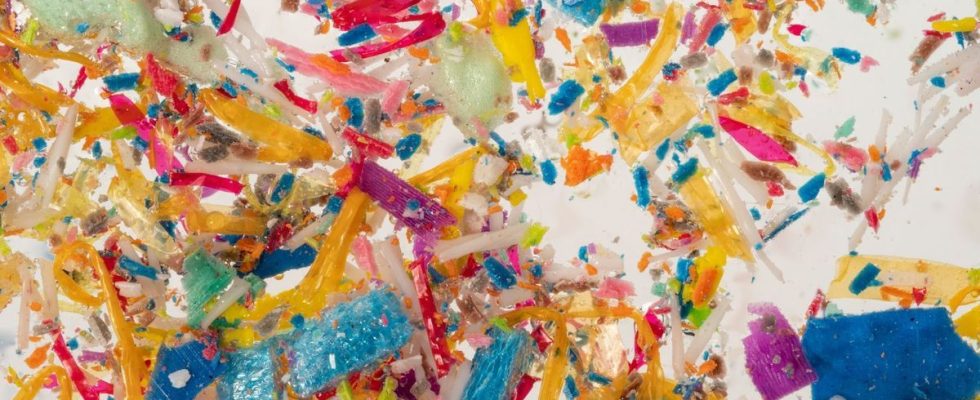Published on
Updated
Reading 2 min.
Microplastics are everywhere. But a new study reveals that these are also found in all human placental tissues tested. A worrying presence for the future.
We know they are present in bottled water, the meat we eat, and even the air. But obviously, microplastics are much more present in our body than we thought… According to American researchers, microplastics were found in all the human placentas in their analysis.
The polymer from plastic bags found in all placentas
The study, published on February 17 and carried out in New Mexico, analyzed 62 placenta samples using a new analysis method. In a process called saponification, researchers chemically treated the samples to “digest” the fat and proteins into a kind of soap. Then they spun each sample in an ultracentrifuge, which left a small plastic nugget at the bottom of a tube. Using a technique called pyrolysis, they placed the plastic pellet in a metal cup and heated it to 600 degrees Celsius, then captured the gas emissions as combustion of different types of plastic at specific temperatures.
Numerous microplastics were discovered in each of the tissues analyzed without exception. The concentration ranged from 6.5 to 790 micrograms per gram of tissue. And unsurprisingly, it was polyethylene, used to make plastic bags and bottles, that was found to be the most widespread. It represented 54% of the total particles found. It was followed by polyvinyl chloride (PVC) and nylon.
Pollution impossible to curb?
In their press release, the researchers say they are particularly troubled by the quantities of microplastics discovered in the placenta, “because the tissue has only been developing for eight months (it begins to form about a month after the start of the pregnancy).” This means that even before being born, babies already feel the effects of pollution and absorb them. Which does not indicate anything good for their development.
On the one hand, these microplastics could well have an influence on future diseases. According to researchers, high concentrations of microplastics could explain the increase in inflammatory bowel diseases and colon cancer in people under 50, as well as the decline in sperm counts.
On the other hand, this raises all the more the question of the treatment of our waste and of a limit inexorably crossed: “This ends up in groundwater, and sometimes they aerosolize and end up in our environment. Plastic arrives (in our body) not only by ingestion, but also by inhalation. This not only affects us as humans, but also all of our animals – chickens, livestock – and all of our plants. We see it in everything”, explains Marcus Garcia, one of the authors of the study.
“If the dose continues to increase, we start to worry. If we see effects on the placenta, then all mammal life on this planet could be affected. That’s not good.”adds the main author.
